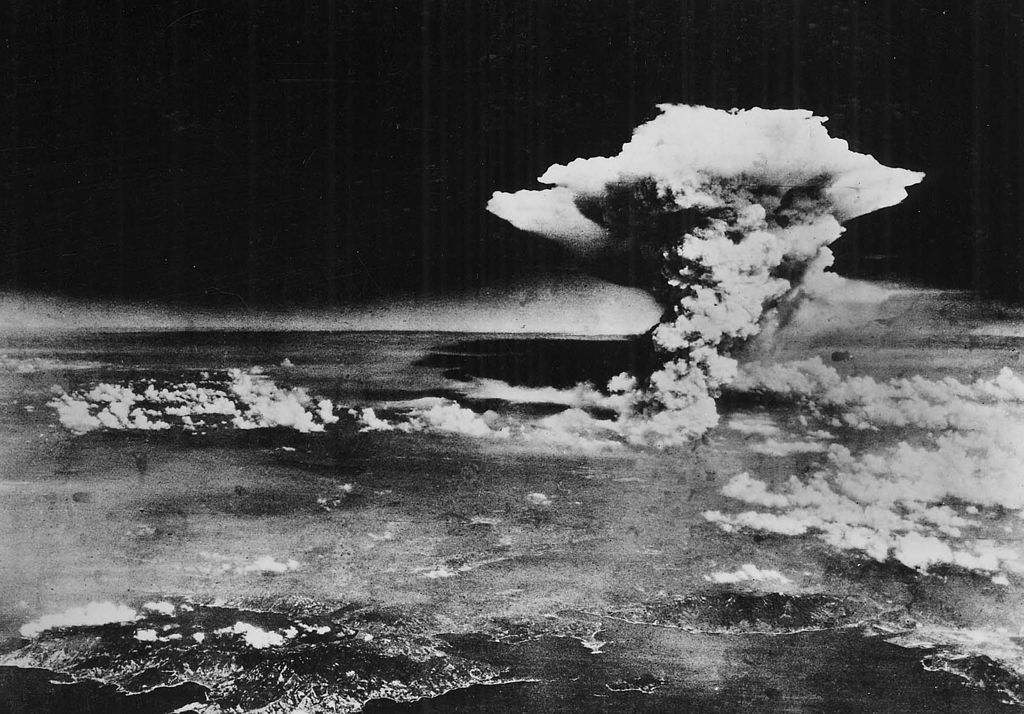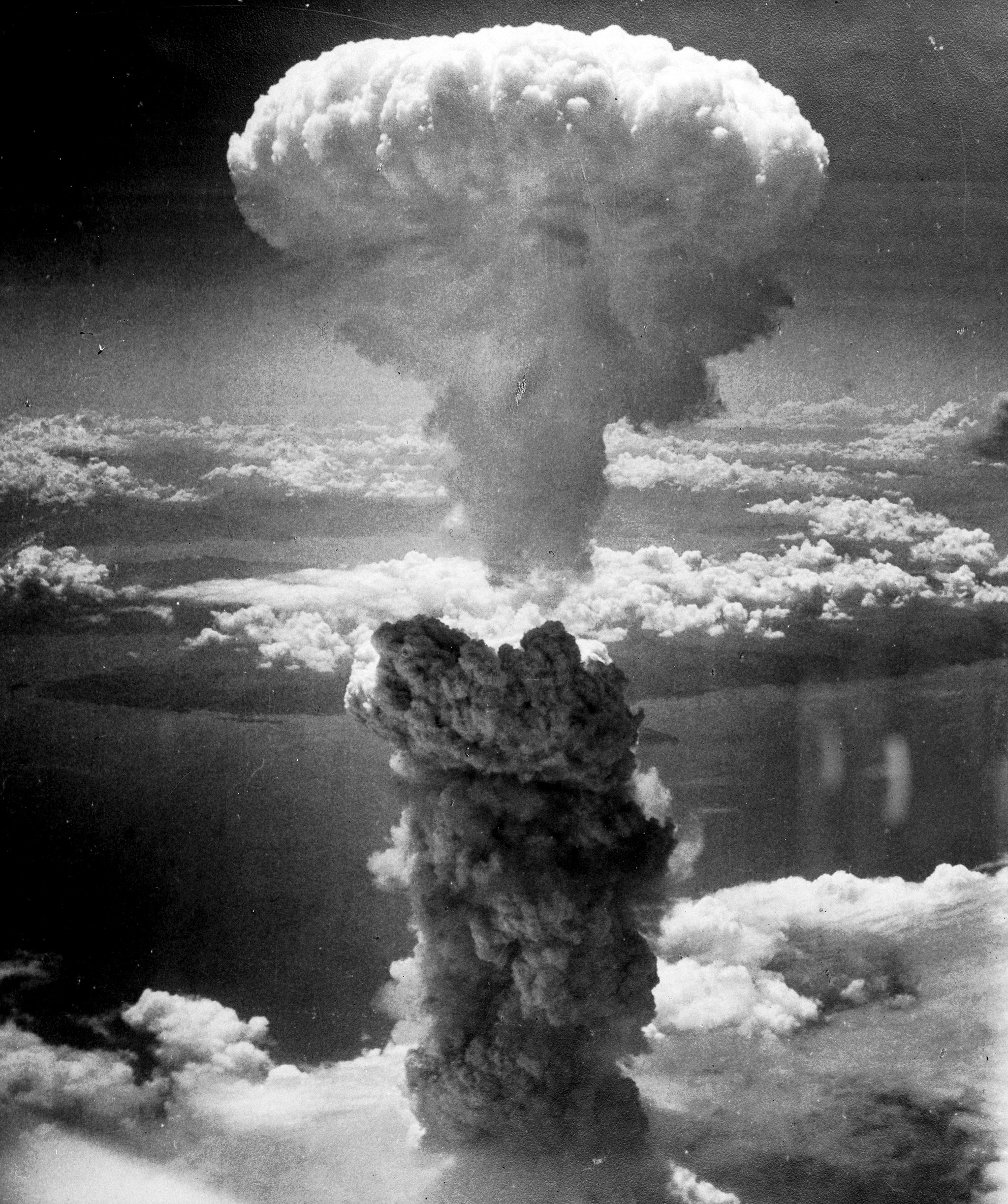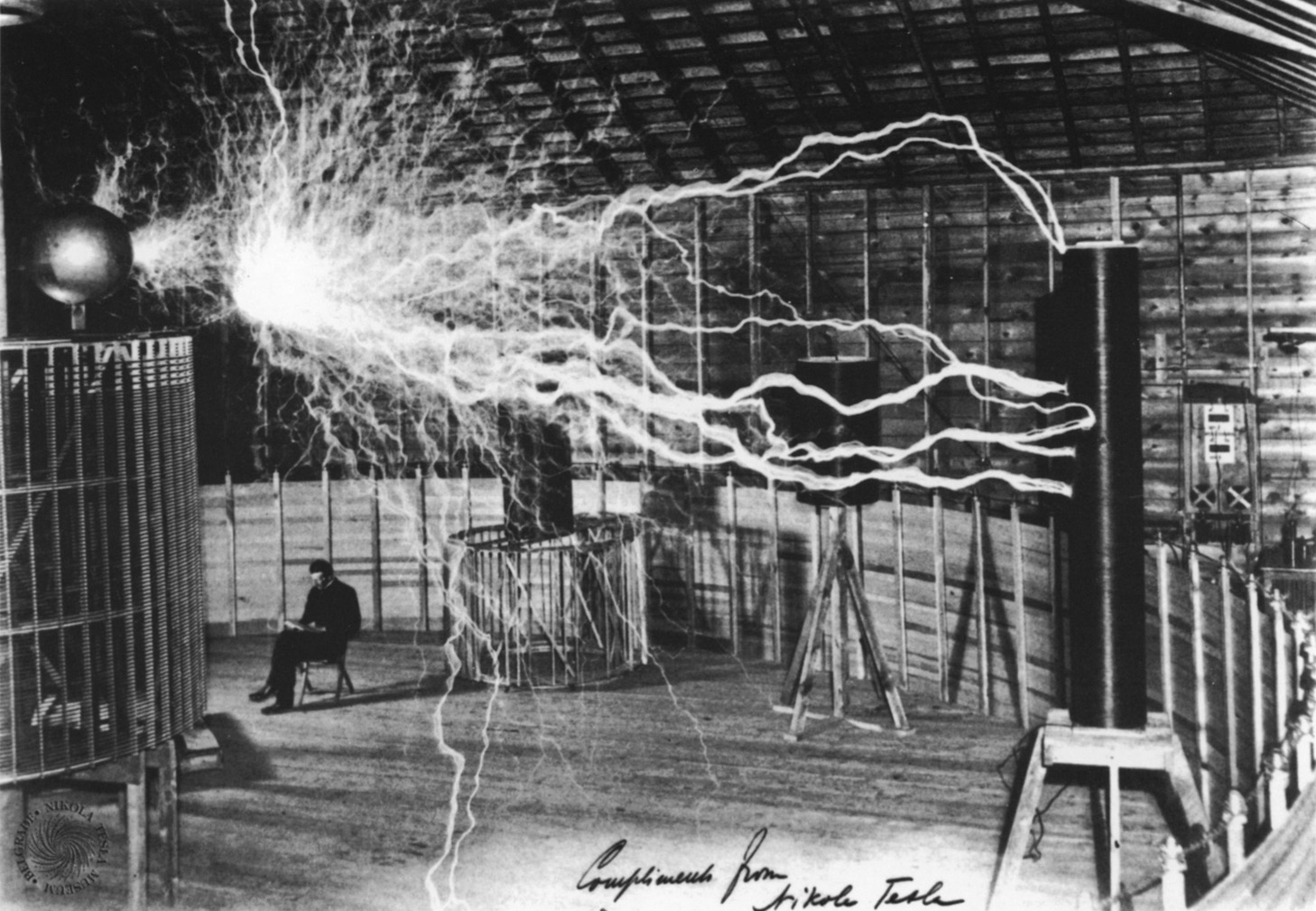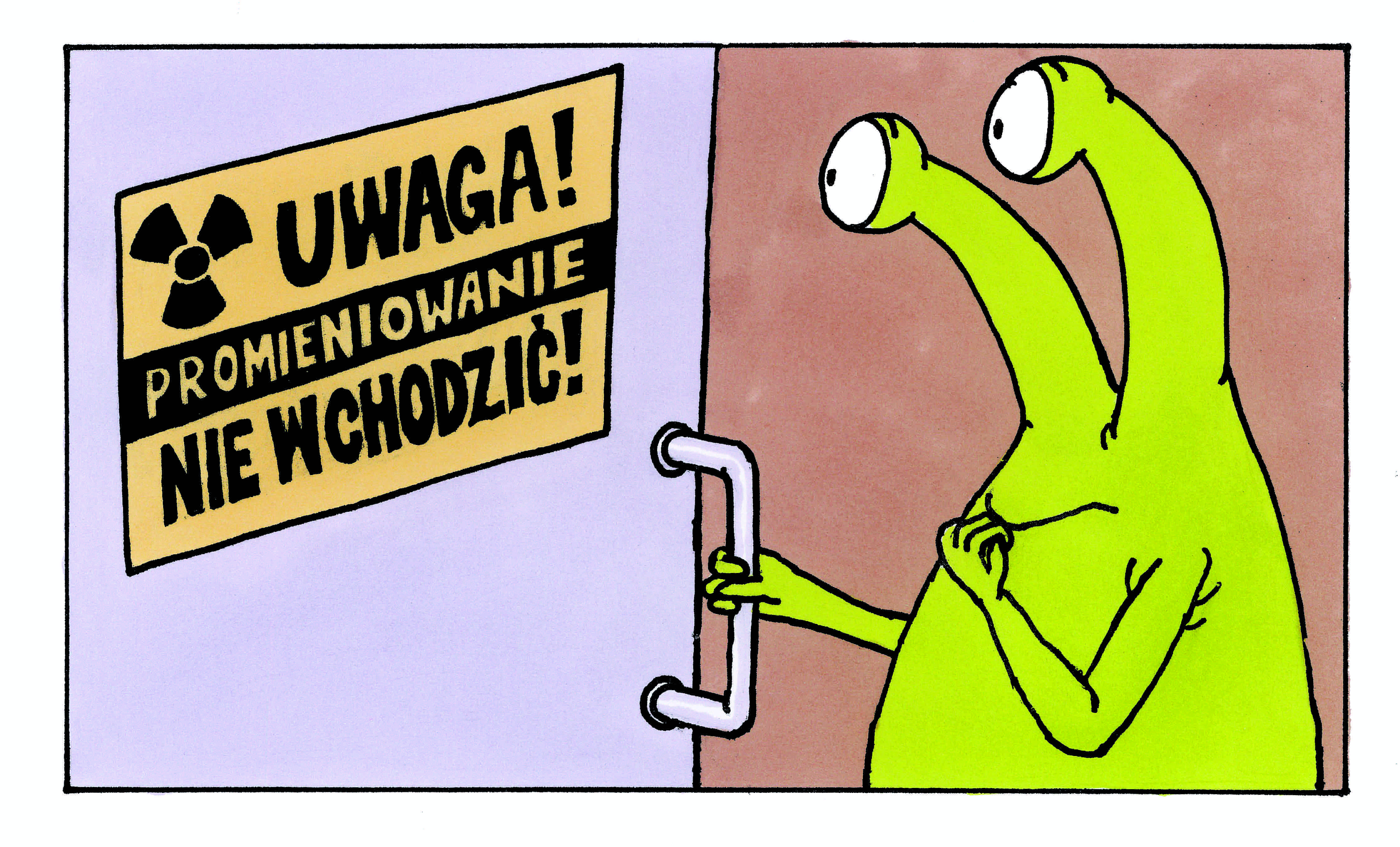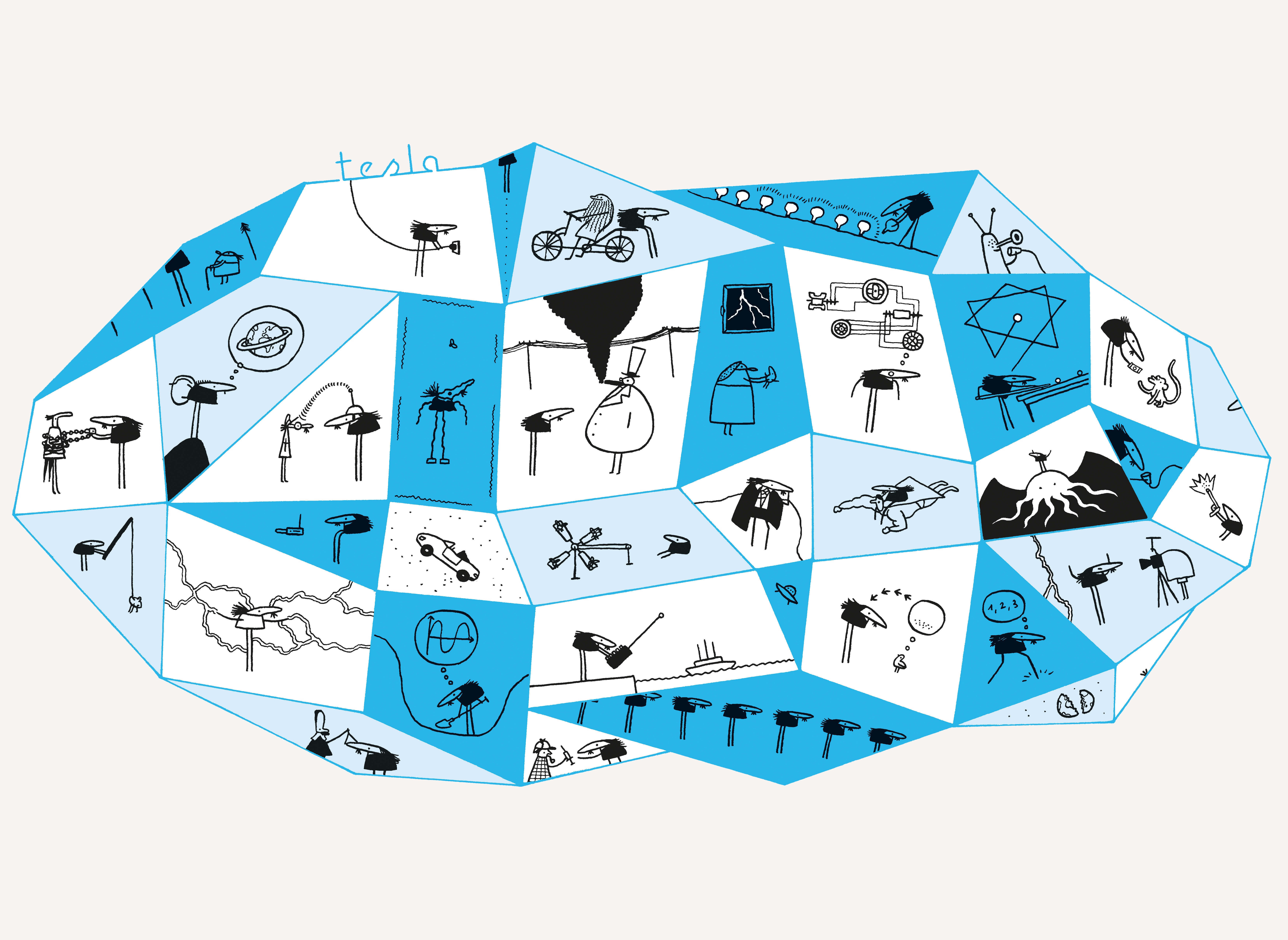
“There is not the slightest indication that nuclear power will ever be obtainable,” Albert Einstein declared in 1930, thereby disregarding the chain reaction that he had started in the first place.
“If we were able to control the degree of decay of radioactive elements, we could obtain enormous amounts of energy from small portions of material,” the physicist Ernest Rutherford noted in 1904. A year later, Albert Einstein’s famous equation E = mc² confirmed this observation. His algorithm proving that mass is energy made him world famous. However, the author of the equation didn’t really believe that it would be useful in day-to-day life. Splitting an atom joined by a negatively-charged electron and a positively-charged proton seemed impracticable to him.
Meanwhile, in 1920 Rutherford announced the hypothesis that an atom is made up of not only an electron and a proton, but its nucleus has one more elementary particle: a neutron. His words caused quite a stir. If the atom’s nucleus was not homogeneous, perhaps it was possible to split it. Rutherford’s assistant, James Chadwick, who was present at the lecture, had doubts about the hypothesis of his boss. Finally though, Chadwick figured that if the neutron exists, he would ‘hunt it down’.
The hunt lasted over a decade. But in the end, in February 1932, Chadwick achieved what he wanted. The device designed by him detected the presence of unknown particles in ionizing radiation. Chadwick, exhausted after months of ceaseless work, gathered up the strength to run over to a place called the Kapitza Club, where theoretical physicists would regularly meet. Once there, he presented his evidence for the existence of neutrons in a few short sentences, adding that Rutherford was right. After that, he fell into an armchair and announced the following, to the excited scientists: “And now I wish to be chloroformed and put to bed for a fortnight.”
He was awarded the Nobel Prize three years later for his successful hunt.
Patenting the atom
Leó Szilárd, a Hungarian physicist living in London, started his reading of The Times on the morning of 12th September 1933 with an article framed by the rather blaring title “Breaking Down the Atom”. Rutherford, questioned by a journalist, was discussing the possibilities of using nuclear energy. His theses sounded just about as pessimistic as the observations made by Einstein. “The energy produced by the breaking down of the atom is a very poor kind of thing. Anyone who expects a source of power from the transformation of these atoms is talking moonshine,” Rutherford claimed. “All of [this] made Szilárd restive,” explains Richard Rhodes in his book The Making of the Atomic Bomb. And it wasn’t only because of the British scientist’s thesis. Szilárd was only one of the very many anonymous Jewish refugees in London, “lingering over morning coffee in a hotel lobby, unemployed and unknown,” Rhodes says, justifying the scientist’s frustration. Finally, the irritated physicist went out for a walk. While on a pedestrian crossing, he experienced a revelation.
“As the light changed to green and I crossed the street, it suddenly occurred to me that if we could find an element which is split by neutrons and which would emit two neutrons when it absorbs one neutron, such an element, if assembled in sufficiently large mass, could sustain a nuclear chain reaction,” he pondered. Such a chain reaction could be conducted in a reactor, which would emit enormous amounts of energy. Or you could use it to detonate an inconceivably powerful bomb. Thrilled by his own ingenious observations, Szilárd started to wonder how they could benefit him in practical terms. He finally filed an application with the British patent office for a patent for… invoking a chain reaction by breaking down atoms. The patent officers, surprised by the application, demanded more details, but the Hungarian physicist was unable to specify what material he wanted to use for the reaction. The patent was not approved.
In the meantime, Italian physicist Enrico Fermi was conducting the experimental bombardment of portions of uranium with a stream of neutrons; in May 1934, he succeeded in inducing strong radioactivity using the method. In autumn of the same year, he announced that physicists were making a mistake by using ‘fast neutrons’ endowed with high energy levels, as they would quickly penetrate the atom without any greater consequences. Fermi discovered that ‘slow neutrons’ possessing a low energy level needed to be used. Indeed, they were the ones that induced radioactivity.
Yet at the time, nobody associated the phenomenon with nuclear fission; one additional impulse was needed to make the great discovery.
Accelerator of fear
Ignorant people have the advantage over specialists that they do not hesitate to try something that is considered to be impossible. In spite of the continued work of theoretical physicists, the opinion prevailed that splitting the nucleus of an atom was impossible. This particular nuance did not seem to bother two German chemists, Otto Hahn and Fritz Strassmann. While experimenting with uranium, they exposed it to ‘slow neutrons’ and suddenly noticed that a small part of it converted to a lighter element, barium. Hahn’s confusion was so great (as the law of Dalton’s Atomic Theory stating that atoms of one element cannot change into atoms of another element was broken) that he gathered up the courage to write a letter to his Jewish friend and physicist who had fled the Nazis from Austria to Sweden. Thus, at the end of 1938 in Stockholm, Lise Meitner read through the description of the experiment with increasing astonishment. The letter ended with a question from Hahn: “Perhaps you might have some fantastic explanation for this? My understanding is that uranium cannot really decompose into barium.” And yet it could. Along with her nephew Otto Robert Frisch, Lise Meitner put together an article for the science journal Nature, which presented the method of splitting the nucleus of a uranium atom into two lighter elements. The authors noted that the difference in weight is a result of energy emission in an amount that complied with Einstein’s equation E = mc².
As he was reading the latest issue of Nature with his morning coffee, Leó Szilárd once again experienced a revelation. He quickly grabbed some note paper and started to write a letter to Lewis Lichtenstein Strauss, a millionaire from Virginia who had been generously sponsoring scientific studies. In the letter, Szilárd claimed that thanks to Hahn and Strassmann’s discovery, the construction of nuclear power plants and nuclear bombs would become a possibility. What’s more, Adolf Hitler could put his hands on both of these assets. Szilárd ignored the fact that Hitler’s antisemitic madness had led to a situation in which Germany’s most prominent physicists headed by Einstein had left the country.
This fact would eventually be the determining factor for the nuclear race in the next few years, although Benito Mussolini put his two cents worth here as well. Having become fed up with his rule, Enrico Fermi left Italy [Fermi’s wife was Jewish – ed. note], and once he arrived in the United States, he proceeded to try to convince the US Navy that it needed to start researching nuclear weaponry, because the Axis powers could develop it. Joining him in the effort was Szilárd, who had moved to the United States in mid-1939 thanks to the support of Lewis Lichtenstein. Initially, the military completely failed to grasp what the newcomers from Europe were talking about. Especially when Fermi presented his plan to build a reactor costing a mere $35,000. They promptly sent him away empty-handed.
Szilárd turned out to be a better lobbyist. He managed to meet with his compatriot from Hungary, the outstanding physicist Edward Teller, and with Albert Einstein himself. He managed to convince both of them that it was only a matter of time until the Third Reich came into the possession of nuclear weapons. The famous scientists engaged all their contacts to reach President Franklin D. Roosevelt and make him aware of the gravity of the situation. When they finally succeeded, matters started to gain momentum. The Advisory Committee on Uranium, created by order of the president, met in mid-October 1939 in Washington. It was made up of representatives of the administration and army, while Szilárd, called in to join the group, got the go-ahead to build an atomic reactor.
From the bomb to electric power
Construction of a bomb for the US required a reactor that would be able to produce enriched uranium and plutonium. The first such reactor was constructed in spring of 1940 at Columbia University under the guidance of Enrico Fermi, but it didn’t work. Therefore, Szilárd and Fermi started to build another one there, but they were not able to invoke the chain reaction in it either, as it was too small. So they transferred to the University of Chicago, looking for a place where they could build a larger atomic pile. There, in the university squash court, a desperate Fermi ordered the stacking of graphite bricks and inserted cube-shaped cans containing uranium oxide 235U between them. To slow down or accelerate the reaction, control rods were crucial which, when inserted into the pile, would absorb the neutrons. The first control rods used were a provisional solution. “The rods were made of cadmium sheets nailed to flat wooden strips,” recalls their creator Herbert Anderson. In addition to the radioactivity, the harmfulness of which nobody was aware of, the reactor’s builders had to cope with freezing conditions in the unheated room. The scientists were able to carry on with their work thanks only to the fact that they had found a pile of old coats in one of the locker rooms. So, dressed in raccoon coats, they used their bare hands to erect a nuclear reactor in three weeks from 350 tons of graphite, 36 tons of uranium oxide and six tons of metallic uranium.
Commissioned on the afternoon of 2nd December 1942, the facility generated only 200 W of energy. But thanks to the reactor in Chicago and a second one that Fermi built in Oak Ridge, enough enriched uranium U-238 and plutonium was produced to build the first atomic bomb. The load was detonated on the morning of 16th July 1945 on the military proving grounds in Alamogordo in New Mexico. The power of the explosion shocked those who observed it. “We knew the world would not be the same. A few people laughed, a few people cried, most people were silent,” recalled Robert J. Oppenheimer, one of the most important scientists participating in the Manhattan Project. Not even a month had passed when two nuclear bombs wiped Hiroshima and Nagasaki off the face of the Earth.
The Americans, having been focused on the military application of nuclear energy, did not fully appreciate its potential; after all, as the reactors were producing fissile materials, they were also generating enormous amounts of heat. The method of converting this energy into electricity was fabulously simple. All you needed to do was use the atomic pile as a water heater and use the resulting flow of steam to set a generator turbine in motion. Yet it was the Soviets who first came up with the idea.
With great determination, the Soviet Union was striving to have its own nuclear weapons. Thanks to information provided by Klaus Fuchs (he participated in the Manhattan Project) and the Rosenbergs (who were working for USSR Intelligence), a team led by nuclear scientist Igor Kurchatov commissioned an atomic pile in December 1946 that was very similar to the American piles. Less than three years later, the Soviet Union detonated its own nuclear bomb. And that’s how the arms race began. In the end, Soviet engineers realized that the reactors could be used to produce electricity, and the first nuclear power plant with a capacity of 5 MW was launched on 26th June 1954 in Obninsk.
This fact gained the interest of the British, who wanted their energy system to be less dependent on coal. As British scientists had participated in the Manhattan Project, it wasn’t too much trouble to set up the ‘Magnox’ reactor, which was the heart of the power plant at Calder Hall. Guests from over 40 countries participated in the opening ceremonies, yet Leó Szilárd did not show up. After the two Japanese cities were massacred by atomic bombs, he abandoned physics all together, cut off all relations with his colleagues and retrained to become a biologist. For the rest of his life, he focused on the research of communicable diseases.
Translated from the Polish by Mark Ordon


